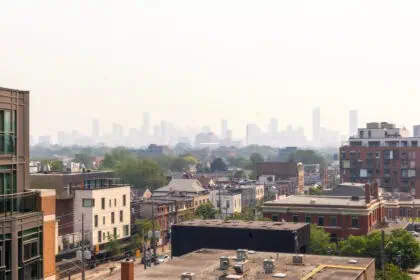A hot season ahead for Ontario
Ontario’s summer 2025 is shaping up to be warmer than usual, according to the latest seasonal outlook from The Weather Network. After a long winter and an unpredictable spring, the province is bracing for above-average temperatures, with regional variations from south to north. From June through August, most of the province will experience a warm and humid season, especially in Toronto, Ottawa, and London.
Early heat and first heat waves before Canada Day
Starting in early June, a quick surge in temperatures is expected, with the first heat waves likely before Canada Day (July 1st). Daytime highs should remain near or slightly above seasonal averages, while overnight lows will stay elevated due to persistent humidity, making nights feel muggy and uncomfortable.
Frequent rain and increased risk of severe thunderstorms
The humid atmosphere will fuel greater atmospheric instability, leading to a higher chance of showers and thunderstorms. Total rainfall for the summer is forecast to be near or slightly above normal, though periods of dry weather are still expected. There is no indication of a prolonged or widespread drought in the region.
Northern Ontario faces dry heat and wildfire risk
Northern Ontario presents a more complex picture. Areas west of Lake Superior, including Thunder Bay, will likely see a hot and dry summer. In contrast, regions east of Lake Superior, like Sudbury, can expect warmer-than-normal temperatures coupled with higher humidity, increasing the likelihood of storms and sultry nights.
One of the main concerns for the north is the elevated wildfire threat, especially north and west of Lake Superior. If these fires materialize, they could severely affect air quality across distant parts of Canada—as seen in the summer of 2023, when Toronto and other urban centres were blanketed in heavy wildfire smoke for weeks.
Watching the Atlantic hurricane season
Outside of the province, the Atlantic hurricane season is forecast to be near normal or slightly more active than usual, with fewer named storms and hurricanes than what has been typical over the past decade. However, the anticipated jet stream pattern may increase the chance of a tropical system tracking into the northeastern U.S., which could also affect eastern Ontario.
Ontario’s summer 2025 promises to be dynamic, with heat, humidity, thunderstorms, and wildfire concerns all in play, alongside potential air quality issues and tropical system impacts.











